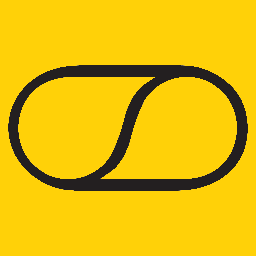If you’re sourcing CNC machining UK services, the fastest route to dependable lead times and competitive pricing is great design-for-manufacture (DFM). This chapter-style guide distils what we’ve learnt delivering thousands of milled and turned parts—prototype to production—so you can engineer components that cut cycle times, reduce rework and land within budget first time.
What drives cost and lead time in CNC machining UK
Four levers dominate total cost of ownership:
- Set-ups – Every time a part is re-fixtured, you add programming, operator time and risk. Design for fewer orientations.
- Tool access – If a cutter can’t reach a feature with a standard tool, you’ll pay in special tooling or 5-axis time.
- Tolerances & finish – Tighter than necessary tolerances or cosmetic finishes on non-critical faces lengthen cycle times and inspection.
- Material & stock form – Specify UK-available grades and efficient stock forms (extrusions, flat bar) to shorten procurement and reduce waste.
Material choices that work in the UK supply chain
Aluminium
- 6082-T6: Europe/UK workhorse (often preferred locally over 6061). Great strength-to-weight, machines cleanly. Ideal for housings, brackets, jigs.
- 7075-T6: High strength, higher cost, slightly poorer corrosion resistance; for stressed components.
Steels
- EN1A (230M07): Free-cutting; superb for turned parts, threads, small batch economy.
- EN8 (080M40): Medium carbon; balanced strength/machinability.
- Stainless 303/304/316: 303 for best machinability; 304/316 for corrosion resistance (316 marine/chemical).
Engineering plastics
- POM/Acetal (Delrin): Dimensionally stable, crisp edges; ideal for precision sliders, gears, fixtures.
- Nylon (PA6/PA66): Tough; allow for moisture uptake in tolerances.
- PEEK: High temp and strength; machines well but costly—reserve for performance-critical parts.
- PC/ABS: For visual prototypes; note potential burrs and heat buildup—design to aid chip evacuation.
Tip: Where a US print calls out 6061-T6, consult your UK machinist—6082-T6 is often a drop-in with better availability domestically.
Geometry rules that save hours (and ££)
1) Favour consistent wall sections
- Guideline: Metals ≥ 1.5–2.0 mm, plastics ≥ 2.5–3.0 mm.
- Thin walls chatter, deflect and demand light cuts (longer cycles). If you must go thinner, bound the thin area and relax finish/tolerance locally.
2) Use generous internal fillets (match the tool!)
- End-mill radius drives the achievable corner. If you want a 6 mm end-mill, specify ≥ 3.2–3.5 mm internal fillet (tool radius + clearance).
- For slot bottoms and pockets, bigger radii = faster because the tool can run at optimal feeds.
3) Avoid deep, narrow pockets
- Keep depth ≤ 3× tool diameter for routine milling; beyond 6–8× you’re into special tooling or multiple step-downs.
- Add relief slots or split the part (bolt-up or dowelled) to avoid extreme aspect ratios.
4) Design holes for drilling
- Minimum practical Ø: 1.0–1.5 mm (aluminium/steel) for standard shops; smaller is possible but slower and costlier.
- Depth: aim ≤ 10× diameter; deeper holes need peck cycles and coolant-through drills.
- Flat-bottom holes? Prefer a standard drill + counterbore. True flat bottoms require end-milling (time penalty).
5) Sensible thread specs
- Engagement: 2–2.5× diameter in metals; 1.5× often sufficient in aluminium with inserts when required. More adds no strength.
- Plastics: Use heat-set inserts or helicoils for durability; avoid tiny metric threads in soft polymers.
- Call out standard thread forms (e.g., M6 × 1.0). Include any special class only where functionally critical.
6) Chamfers beat sharp edges
- Default a 0.5–1.0 mm chamfer or edge break. Sharp edges slow deburring and risk injury.
7) Minimise re-orientations
- Consolidate features on shared datums. If a feature demands a second op, cluster other secondary features on that face to amortise the set-up.
8) Design for workholding
- Provide flat clamping faces or add sacrificial tabs for thin plates.
- Consider soft jaws: add consistent external datums so jaws can pick up quickly.
Tolerances and surface finish: where to be tight—and where not to be
- General tolerances: If not specified, many UK machinists work to around ±0.1 mm on non-critical features. Only tighten what functionally matters.
- Fits: For shafts/bores, specify the fit class (e.g., sliding vs interference) and keep the rest at general.
- Flatness/parallelism: Torque paths, bearing seats and sealing faces warrant GD\&T; elsewhere, avoid blanket call-outs.
- Surface roughness: As-milled ~Ra 3.2 μm is typical. Ra 1.6–0.8 μm costs more (slower feeds, extra passes). Reserve very fine finishes for sealing or optical faces.
Finishing options that balance performance and budget
- Aluminium: Bead blast + Type II anodise for wear/corrosion and colour; hard anodise (Type III) for abrasion-prone components.
- Steels: Black oxide for cosmetic/light corrosion protection; zinc-nickel or electroless nickel for tougher environments.
- Stainless: Often fine as-machined; passivation improves corrosion resistance.
- Plastics: Vapour polish (PC), media tumble (acetal/nylon), or light hand-finish for visual prototypes.
Call out finishes only on the faces that need them and define a cosmetic boundary in the drawing to avoid paying for unseen areas.
Prototype today, production tomorrow: designing once for both
Attwood PD’s sweet spot is taking a rapid prototype and scaling without redesign churn. To do that:
- Use production-realistic stock in prototypes (e.g., 6082-T6 rather than generic aluminium) so cutting data and stability translate.
- Datum strategy: Lock your drawing to the same three-plane datum scheme we’ll use in production fixtures.
- Thread strategy: If inserts are likely in production (plastics/aluminium), use them in prototypes to validate assembly torque.
- Document CTQs (critical-to-quality features) on the print. We’ll focus inspection and process capability where it counts.
Quick-reference DFM table
| Design choice | Time/Cost impact | Better alternative |
|---|---|---|
| 0.5 mm walls in aluminium housing | Tool chatter, slow feeds, scrap risk | 1.5–2.0 mm walls with ribs where stiffness matters |
| 90° internal corners | Requires tiny tools/slow passes | ≥ 3.2 mm fillets matched to end-mill radius |
| Deep pocket 20× wider than tool | Long cycle, tool deflection | Split component, add access holes, or shallow pockets |
| Flat-bottomed Ø3 mm holes | End-milling, multiple passes | Standard drill + counterbore if function allows |
| Blanket ±0.02 mm across drawing | Slow cycles, high inspection time | Tighten only CTQs; general ±0.1 mm elsewhere |
| Full-part cosmetic finish | Unnecessary processing | Finish only A-faces/cosmetic zones |
Drawing checklist before you release to manufacture (UK-focused)
- [ ] Material grade available locally (e.g., 6082-T6 vs 6061)
- [ ] Stock form chosen to minimise waste (extrusion/profile vs billet where possible)
- [ ] Datum scheme clear and repeatable for fixturing
- [ ] General tolerance noted; CTQs called out separately
- [ ] Thread call-outs complete (size, depth, class; insert if plastic/aluminium)
- [ ] Surface finish only where functional/cosmetic
- [ ] Edge breaks/chamfers specified globally
- [ ] Any heat treatment/passivation/anodising specified
- [ ] Quantity and delivery plan (prototype → bridge → production)
How Attwood PD reduces your CNC risk in the UK
- Rapid prototypes in metal and plastic (CNC milling, turning, 5-axis, and EDM for hard-to-reach geometry).
- Bridge & series production with repeatable fixtures, tool libraries and robust CMM inspection.
- Material guidance optimised for UK availability to compress lead times.
- DFM reviews within quoting: we suggest geometry tweaks that cut set-ups and simplify tools—without compromising function.
- Finishing & assembly under one roof: anodise, plating, passivation, tumbling, inserts, kitting.
Outcome: fewer surprises, predictable lead times, and parts that pass fit-first-time—whether you need five pieces by Friday or five thousand on schedule.
Practical design patterns (copy/paste into your next spec)
- Internal corners: ‘All internal vertical corners R3.5 unless noted.’
- Edges: ‘Deburr and break sharp edges 0.5–1.0 mm.’
- General tolerance: ‘Unless otherwise stated: ±0.1 mm, holes ±0.05 mm.’
- Surface finish: ‘Ra 3.2 μm general; Ra 0.8 μm on sealing face A only.’
- Threads: ‘Minimum engagement 2×D in metal; use M-series helicoils for aluminium threads M6 and below.’
When to choose 5-axis or mill-turn
- 5-axis pays off when it reduces set-ups for compound faces, impellers, or undercuts. If it’s just for one awkward internal fillet, redesigning the feature is usually cheaper.
- Mill-turn is ideal for prismatic parts with turned centres and side features—fewer chucks, faster takt.
Sustainability notes (without greenwash)
- Buy-to-fly ratio: Choose stock closer to net shape (extrusions, water-jet pre-profiles) to minimise swarf.
- Chip management: We segregate recyclable alloys; designing for fewer tool changes also saves energy across cycle time.
Next steps
Email your model and drawing for a free DFM pass. We’ll return a production-ready quote plus suggestions to shave minutes and cost—keeping your CNC machining UK programme on time.


